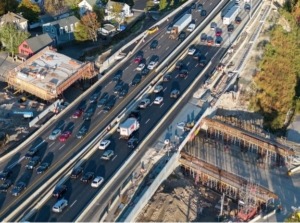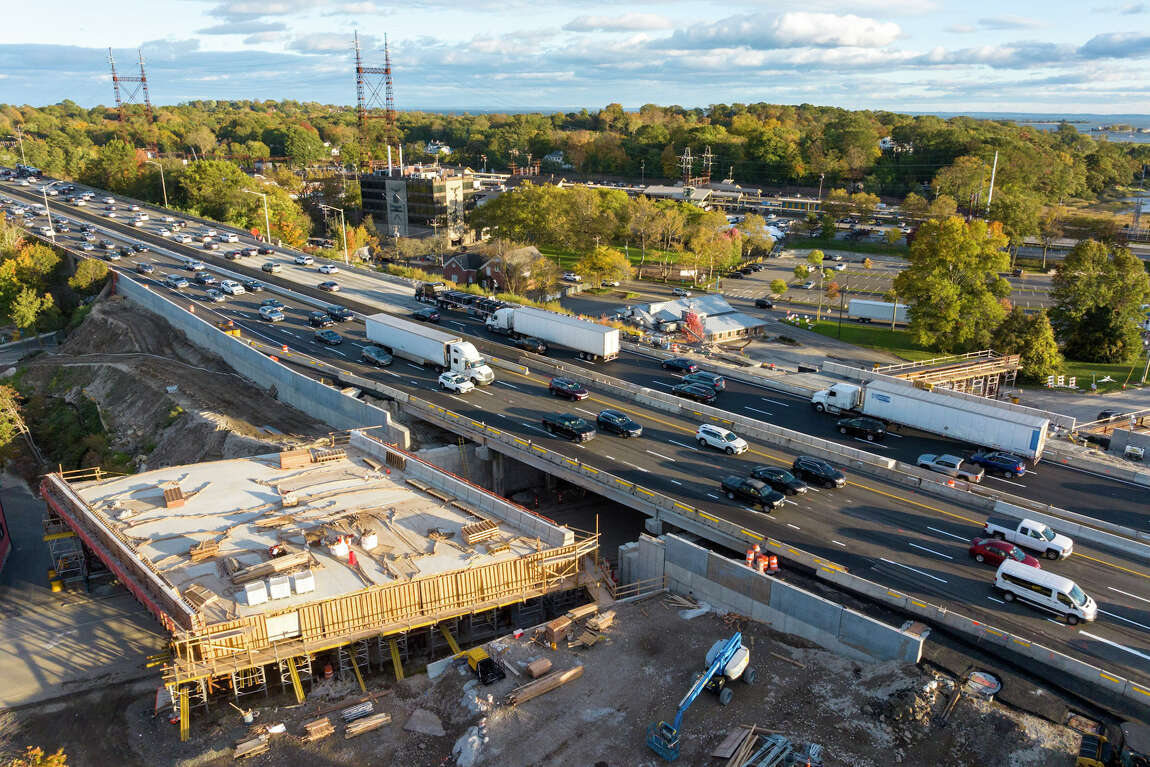Talking Transportation
By Jim Cameron
As a young man I wanted to become a civil engineer and design the railroads of the future. So I went to one of the nation’s best engineering schools, Lehigh University, only to find out in my freshman year that I’d need calculus, physics and chemistry. So I ran quickly to the Arts College and studied sociology.
Still, my admiration of the work of engineers in designing and running our transportation network has never diminished. Here are a few recent examples:
CDOT & ABC:
As we rebuild our crumbling interstate highways, the CDOT deserves credit for learning its ABCs… “accelerated bridge construction”. Over two recent weekends they demolished and replaced two three-lane bridges at exit 17 in Westport with, considering the enormity of the tasks, minimal impact on traffic.
They even finished their work early: under-promising and over-delivering.

The speed of the work on the $104 million project was enhanced by building the replacement bridges in advance so they could literally slide into place after the old bridge was torn down. Just imagine the planning, the measuring and tight tolerances. Yet, the first weekend project (for the northbound bridge) was finished 14 hours earlier than planned.
A similar bridge replacement in Stamford on I-95 in 2019 went just as well, with more such projects to come as Federal dollars rebuild our infrastructure.
METRO-NORTH VS MOTHER NATURE:
The same weekend CDOT was doing its bridge work in Westport, Mother Nature was closing down rail operations on the Hudson line near Scarborough in Westchester County. A giant landslide poured down the hill, depositing 600 cubic yards of soil and rock on top of the railroad tracks, affecting over a hundred Metro-North trains and dozens of Amtrak trains.
The landslide happened on a Saturday morning, but thanks to the MTA’s engineers and construction crews, 43 hours later the tracks were reopened in time for the Monday morning commute.
An impressive effort, and not the railroad’s first in battling Mother Nature… nor its last. But again, engineering prowess came to the rescue.
DRONES AT SEA:
The Danish energy company Orsted was embroiled in a labor dispute at the State Pier in New London last week. The International Longshoremen Association (ILA) claims jurisdiction over loading and unloading the vessels there which are carrying the giant components for planned offshore wind farms.
However, thousands of miles away in the North Sea, Orsted is testing use of giant drones to deliver supplies to their offshore sites. The four-engine drones have an eight and a half foot wingspan and can carry up to 150 pounds of cargo dangling below the craft. Once carried out to sea over the construction site’s helipad, the drone releases its cargo and heads home.
More amazing engineering, this time with huge implications on jobs. Drones require an operator but not a ship and expensive crew to complete their work. If these trials work, that could mean massive cost savings for Orsted and fewer union jobs for seamen.
So, the next time you’re driving or taking a train, think of the engineering that went into that design. There’s a lot of smart people working very hard behind the scenes to make your trip possible.
Jim Cameron is founder of the Commuter Action Group and advocates for Connecticut rail riders. His weekly column “Talking Transportation” is archived here. You can contact Jim at CommuterActionGroup@gmail.com.



